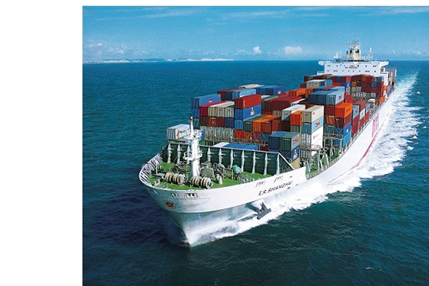When market frictions such as transaction and search costs prevent arbitrage, “good” buyers, from whom sellers can earn greater profits, and “bad” buyers coexist in the same market, and a non-random matching pattern between importers and exporters may emerge. In this setting, trade consists of long-term relationships instead of spot transactions. The team will analyse the two implications of this non-random matching on the role of exports in the growth and stability of an economy. The first implication is that productivity gains from exporting may depend on matching with foreign importers. The second is that exports based on long-term relationships may be more stable to shocks than exports based on spot transactions.
In order to investigate these implications, the team has constructed a Mexico-U.S. matched exporter-importer dataset, with which researchers can observe the characteristics of both exporting and importing firms at the transaction level, as well as information on unit prices, quantity and detailed goods categories. To produce this dataset, they matched three existing databases: the 2004-2010 Mexican customs transaction data, the Mexican manufacturing plant survey data, and publically available U.S. company datasets such as Orbis and Compustat. This is the first attempt in the literature to match customs transaction data with firm characteristics data in both exporting and importing countries.
The researchers plan to use this novel dataset to carry out three subprojects:
- First, the team will investigate how Mexican firms systematically match with U.S. firms. They will apply the methods of structural estimations in matching markets recently developed in Industrial Organization and Labour Economics to quantify the relative importance of multiple observable characteristics in determining matching patterns. They will also examine whether shocks in the availability of either importers or exporters tend to upgrade or downgrade matching of Mexican firms by using (a) the abruption of the multi-fibre arrangement in 2005 that eased non-NAFTA country entry into the U.S. market; (b) Mexico’s tariff reductions that eased the entry of non-NAFTA countries into the Mexican market.
- In the second project, the researchers will analyse the implication of matching for the measurement of productivity gains from exporting. The conventional total factor productivity (TFP) may capture the ability of U.S. partners as well as the true productivity of Mexican exporters, if the surplus Mexican exporters receive from matching increases the ability of their partners. The team will identify this bias by using exogenous reshuffling of matching obtained in the first project. They will also estimate true productivity in a structural model of matching markets.
- Finally, the researchers will also investigate how the vulnerability of exports to shocks depends on the type of relationship between the importer and the exporter – i.e. “spot market” relationships or “long term contract” relationships, depending on the frequency of partner switches. They will analyse the patterns of collapse and recovery of Mexico’s exports to the U.S. during the 2008-2009 crisis for the two types of relationships and examine how the Mexican drug war affected the exports of the two types of industries.
The research team is working closely with the Ministry of Economy in Mexico, and hopes that they will be able to make use of their research in several policies. First, the results of this project should help the Ministry promote more efficient Mexican exporter–U.S. importer matching by reducing information barriers for both parties. Second, the team’s research could contribute to the design of risk-coping policies by analysing which types of transactions are more or less likely to break up and recover from large drops in demand -- such as the collapse of U.S. demand in 2008-2009 which led the Mexican government to give wage subsidies to the automobile and auto-parts industries as a mitigation measure.








